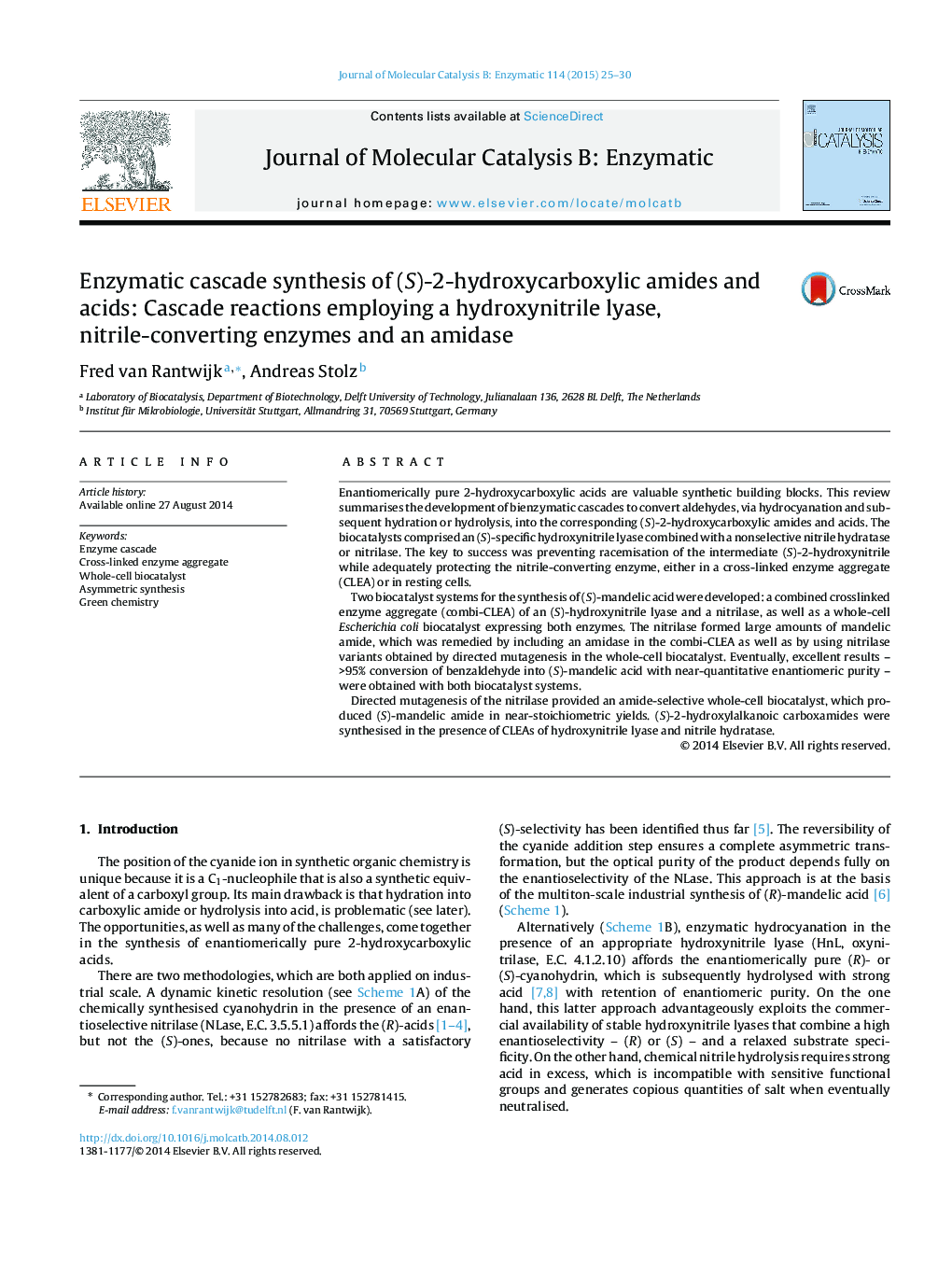| کد مقاله | کد نشریه | سال انتشار | مقاله انگلیسی | نسخه تمام متن |
|---|---|---|---|---|
| 69661 | 48786 | 2015 | 6 صفحه PDF | دانلود رایگان |

• We review the bienzymatic conversion of aldehydes into enantiomerically pure hydroxycarboxylic acids and amides.
• Enzymatic cascade of hydrocyanation and nitrile hydration/hydrolysis.
• Biocatalysts: cross-linked enzyme aggregates as well as whole-cell Escherichia coli expressing two enzymes.
• Near-quantitative yield and ee at synthetically relevant concentrations.
Enantiomerically pure 2-hydroxycarboxylic acids are valuable synthetic building blocks. This review summarises the development of bienzymatic cascades to convert aldehydes, via hydrocyanation and subsequent hydration or hydrolysis, into the corresponding (S)-2-hydroxycarboxylic amides and acids. The biocatalysts comprised an (S)-specific hydroxynitrile lyase combined with a nonselective nitrile hydratase or nitrilase. The key to success was preventing racemisation of the intermediate (S)-2-hydroxynitrile while adequately protecting the nitrile-converting enzyme, either in a cross-linked enzyme aggregate (CLEA) or in resting cells.Two biocatalyst systems for the synthesis of (S)-mandelic acid were developed: a combined crosslinked enzyme aggregate (combi-CLEA) of an (S)-hydroxynitrile lyase and a nitrilase, as well as a whole-cell Escherichia coli biocatalyst expressing both enzymes. The nitrilase formed large amounts of mandelic amide, which was remedied by including an amidase in the combi-CLEA as well as by using nitrilase variants obtained by directed mutagenesis in the whole-cell biocatalyst. Eventually, excellent results – >95% conversion of benzaldehyde into (S)-mandelic acid with near-quantitative enantiomeric purity – were obtained with both biocatalyst systems.Directed mutagenesis of the nitrilase provided an amide-selective whole-cell biocatalyst, which produced (S)-mandelic amide in near-stoichiometric yields. (S)-2-hydroxylalkanoic carboxamides were synthesised in the presence of CLEAs of hydroxynitrile lyase and nitrile hydratase.
Figure optionsDownload as PowerPoint slide
Journal: Journal of Molecular Catalysis B: Enzymatic - Volume 114, April 2015, Pages 25–30